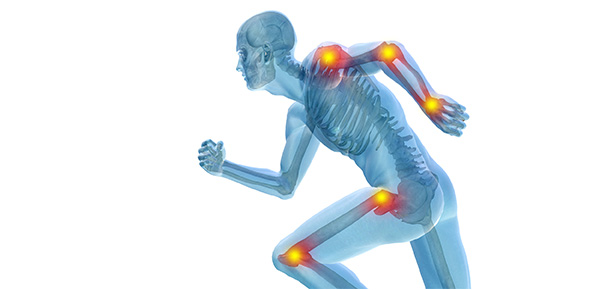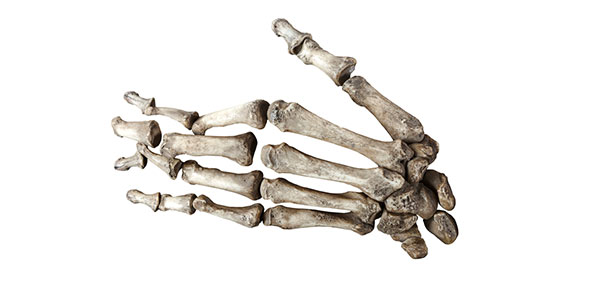Related Flashcards
Cards In This Set
| Front | Back |
|
Membrane potential
|
Refers to a separation of charges across the membrane or to a difference in the relative number of cations and anions in the ICF and ECF.
|
|
What maintains the membrane potential?
|
The membrane potential is maintained by the Na+/K+ pump.
|
|
NA+/ K+ pump
|
The Na+/K+ pump is found in the membranes of many types of cells. In particular, it plays a very important role in nerve cell membranes.
|
|
What leads to a nerve impulse?
|
Notice that 3 positive ions (Na+) are pumped out of the cell (towards ECF) for every 2 positive ions (K+) pumped into the cell (towards ICF). This means that there is more positive charges leaving the cell than entering it. As a result, positive charge builds up outside the cell compared to inside the cell. The difference in charge between the outside and inside of the cell allows nerve cells to generate electrical impulses which lead to nerve impulses.
|
|
Permeability properties of the membrane at rest
|
About 50 to 75 times more permeable to K+ than to Na+.
|
|
Voltage
|
It is the difference of electrical potential between two points
|
|
Current
|
The flow of electrical charges
|
|
The resting membrane potential
|
The membrane potential that exists when an excitable cell is not displaying an electrical signal. (Positive outside/negative inside- difference across the concentration gradient)
|
|
What kind of tissue are neurons and muscles?
|
Neurons and muscles are excitable tissue
|
|
Cell body
|
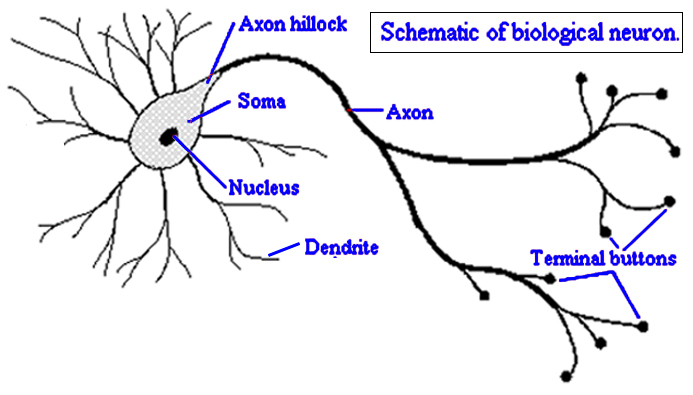 Also known as the soma, houses the nucleus and organelles. |
|
Dendrites
|
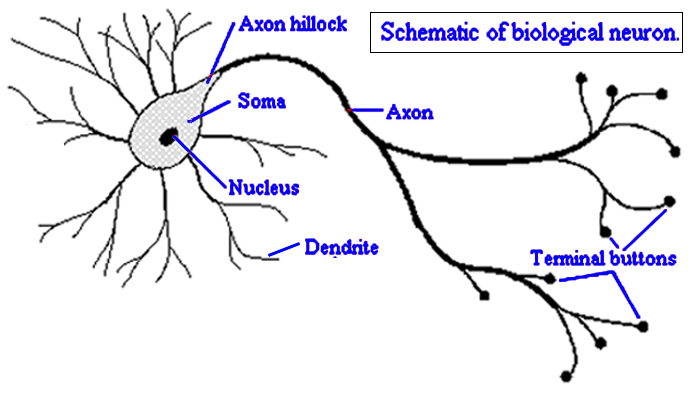 Extensions coming from the cell body, typically project like antennae to increase the surface area available for receiving signals from other nerve cells. Carry signals toward the cell body, and contain protein receptors for binding chemical messengers from other neurons. |
|
Axon
|
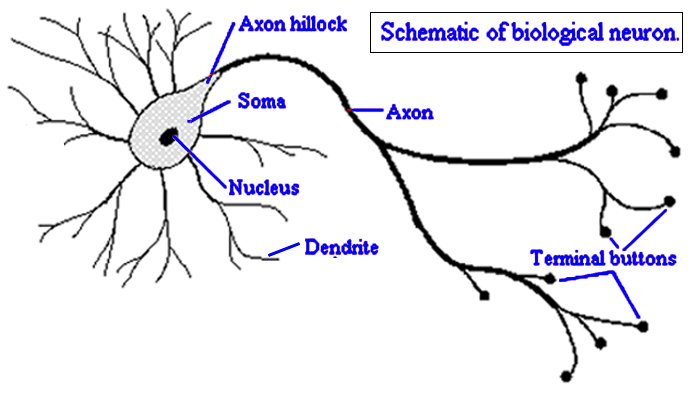 A nerve fiber, a single, elongated, tubular extension that conducts action potentials away from the cell body and eventually terminates at other cells. |
|
Graded Potentials
|
Local changes in membrane potential that occurs in varying grades or degrees of magnitude or strength.
|
|
What happens during a graded potential?
|
Graded potentials are usually produced by a specific triggering event that causes gated ion channels to open in a specialized region of the excitable cell membrane. (The stronger the triggering event, the more gated channels that open, the greater the positive charge entering the cell, and the larger the depolarizing graded potential at the point of origin. Also, the longer the duration of the triggering event, the longer the duration of the graded potential)
|
|
Action potential
|
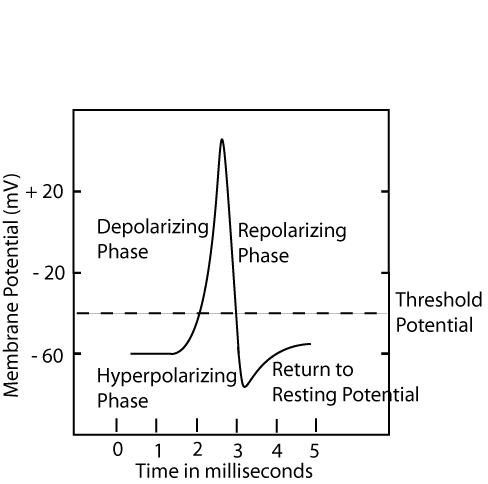 Brief, rapid, large (100mV) changes in membrane potential during which the potential actually reverses, so that the inside of the excitable cell transiently becomes more positive than the outside. |



